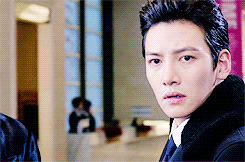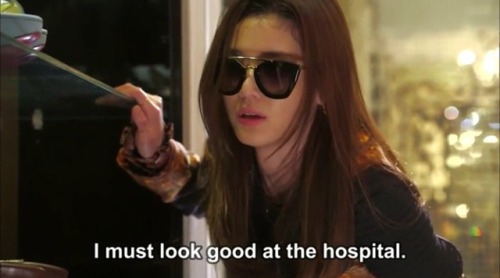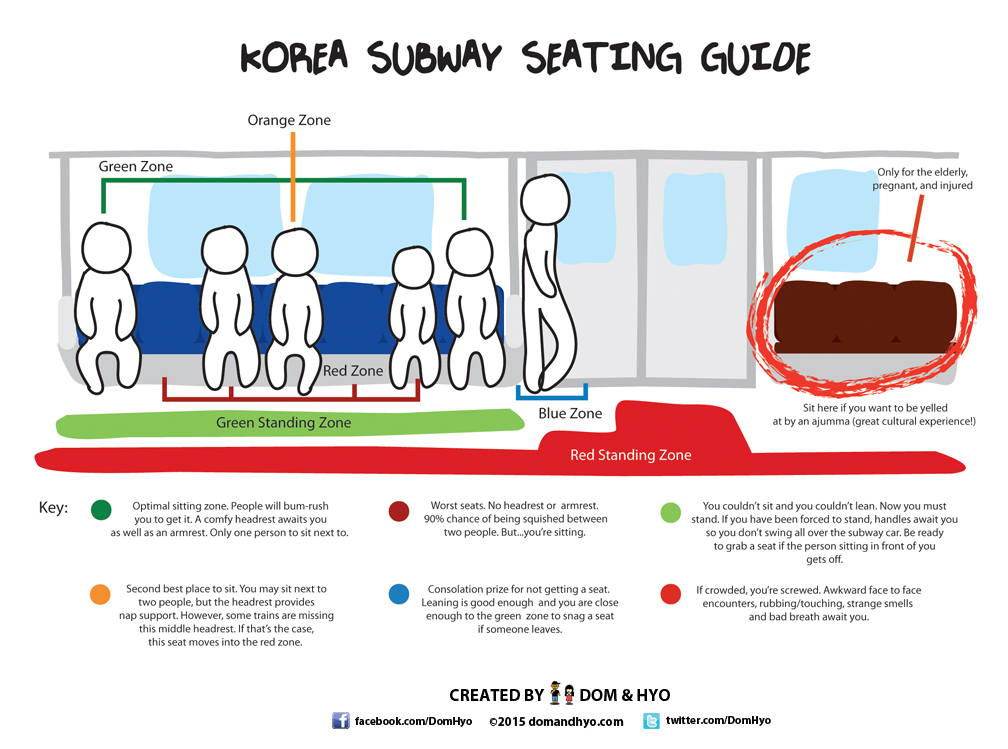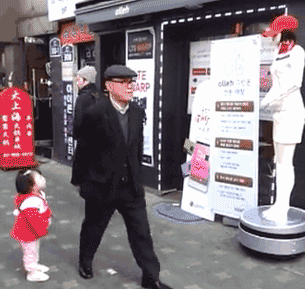
South Korea is such a unique country with a culture like no other. In this post, I’ll tell you a little bit about what is acceptable in Korean culture and what is definitely not acceptable. I’ll start by teaching you how to dress, how to attend class/work, how to act on the subway, how to shop, and how to eat like a pro! –So one day if you get the chance to visit Korea, you’ll appear to be “totally normal…”
FASHION:
DON’T put minimal effort into your outfit, even if you are just running to the GS Mart for a banana milk. If you go out wearing sweat pants or a sloppy outfit Koreans will think that you have just about given up on life. DO take the extra time to put on something nice.
For girls, don’t wear low cut shirts or expose your shoulders. This is considered very provocative. The cardigan is your new best friend! However, feel free to wear short skirts, dresses, and shorts. Showing off your legs is not considered lewd. But you might want to be wary of how short your bottoms are, especially if you may be going to a traditional restaurant. For guys, don’t take off your shirt in public and try to dress nice.–It’s okay to care about your appearance here! In fact, you’ll see mirrors placed randomly around, like in elevators and even the cafeteria! Korean students (yes girls AND guys) will generally be found primping their look in front of these mirrors.
Makeup and skin care is huge here.You will find that most girls (and even guys!) will wear makeup daily, even if they aren’t going anywhere special. Girls and guys alike, aren’t afraid to try out some snail cream, or pig collagen masks designed to brighten, smooth wrinkles, and making their skin healthier overall. Most of what is in style for both boys and girls here is reflected in Korean pop culture, most especially in dramas and pop music. The overall message, dress to impress!



CLASSES/WORK:
DON’T yawn if you are tired. The professor (or your boss) will think you are bored with their lecture and perceive you as being rude. This doesn’t apply only to class (or work), but also to Korean everyday life. If you feel you must yawn in public cover your yawn with one or preferably both hands. But if you’re in class or at work, you should try your utmost to refrain from yawning. DO hold your questions until the end of class and ask the professor when the class is over. Koreans will view questions posed during the lecture as a challenge to the professor and almost as though you don’t trust or believe in what they are teaching you.

THE SUBWAY:
DON’T sit in the seats at the end of the subway car reserved for the elderly, handicapped, and pregnant.
DO feel free to sit in any of the seats in the middle of the car or stand if no seats are available. If you are seated and you see a person older than you get onto the car, DO get up and offer them your seat if all the other seats are taken. This part of Korean culture stems from their roots in Confucianism and the honor placed on age and experience.
If you fail to do either of the two things mentioned above, Koreans will glare at you and mutter “Aiee, weegook-saram..” —ugh, foreigner…


SHOPPING/GREETING:
As you walk into a store and hear “Anyeonghaseyo,” (Hello) DON’T ignore the shopkeeper, DO bellow back “Ne anyeonghaseyo!” and give the shopkeeper a head bow. If you buy something, DO hand your card or money to the cashier with BOTH hands or support your outstretched right hand at the elbow with your left hand. As you leave the store DO say “Kamsahamnida, anyeonghigyesaeyo!” (Thank you, goodbye!) and bow to the shopkeeper once again, even if you did not buy anything.
In America, it isn’t that common to be greeted by shopkeepers. Sometimes we walk into stores, look around, and leave all without even acknowledging the clerks. In Korea, you will always be greeted by the clerks. In some instances they may even follow you around the store. At first I thought this was creepy, but I finally got used to it and realized that they want to help you out if you have any questions.
Bowing is a huge part of Korean culture. In America we don’t have anything that is similar to the bow. Some people propose that handshakes are similar, however, handshakes are something Americans do upon meeting one another for the first time. Bowing is something that everyone in Korea does, all the time. Want to acknowledge the shopkeeper? Bow. Want to thank someone for helping you? Bow. Want to apologize for bumping into someone on the subway? Bow. See your classmate or professor walking down the street and want to say hi? Bow. There are different degrees of bowing. How low and long you bow indicates your level of sincerity and the status of the person you are bowing to. When you bow to a shopkeeper or your friend, a head nod is acceptable, but if you have sincerely wronged someone you better bow with your hands on your stomach and your back almost parallel to the ground and hold it for a good 5 or more seconds. In some cases, if you have done some serious wrong, you may even have to get on your knees to apologize. Bowing is another Korean tradition that has roots in Korean Confucianism.



EATING FOOD:
DO be aware of where you are eating. If you are eating at an old fashioned restaurant, you may have to take your shoes off at the entrance and sit cross legged on cushions at miniature tables during your meal. If you are eating at a cafe, more westernized restaurant, or say the school cafeteria, don’t worry about taking your shoes off. DO know how to use chopsticks properly! Korean chopsticks are different than both Chinese and Japanese chopsticks. Korean chopsticks tend to be longer and heavier and are made out of stainless steel (HISTORICAL FACT: In ancient times, only the King ate with steel chopsticks. This was because the metal would change color if the food was poisoned). Also please DO know that Koreans DO NOT eat rice with chopsticks unlike both the Chinese and Japanese. If you notice a large spoon at your place on the table, that is not a serving spoon, but is in fact the utensil you should use to eat your rice and drink the broth from your soup. You should use chopsticks for the vegetables and meat. Don’t ever stab your food with your chopsticks or place your chopsticks up right into your rice. Both of these gestures are considered threatening. (Also on a side note, never write a person’s name in red ink for the same reason)
Korean food consists of many side dishes. Breakfast is not generally eaten in Korea but if it is served, you will get a meal that is similar to lunch or dinner food (My school has served hamburgers for breakfast….). A typical Korean dinner will consist of rice, soup, and an assortment of kimchi/pickled vegetables. DON’T pick at your food. Try to eat everything on your plate and alternate between the side and main dishes as you eat. For example, DON’T eat all of your kimchi first and then all of your meat. In the cafeteria do as the Koreans do and DON’T grab a glass of water with your meal. DO drink after you have finished eating your meal. Just be forewarned, the cups here are VERY tiny. You may need to keep refilling your glass. When you’re eating out, don’t pour your own drink, but always pour the drinks of others and refill their glasses when you see they are getting low. If you are eating out, you should order one or two main dishes for the whole table and not individual meals. Koreans tend to share their meals… I have never seen a table get separate dishes and not share. It just isn’t done.



So now that you know how to dress, how to act in class/at work and on the subway, shop, and eat food properly in Korea, you’re pretty much an expert on Korean etiquette! If you’re reading this post and you enjoyed it, I hope that one day you’ll be able to show off your skills and knowledge of the “Do’s and Don’ts” of what to do in Korea, in Korea! ^o^
In other news, here is an update on my time at Konkuk:
Busan was amazing (Pictures below) and I just had 5 days off of school for Chuseok, or Korean Thanksgiving (Korean Thanksgiving is similar to American Thanksgiving). And this coming weekend I’ll be visiting Buyeo! Buyeo is famous for it’s ancient fortresses and temples.





Comments are closed.